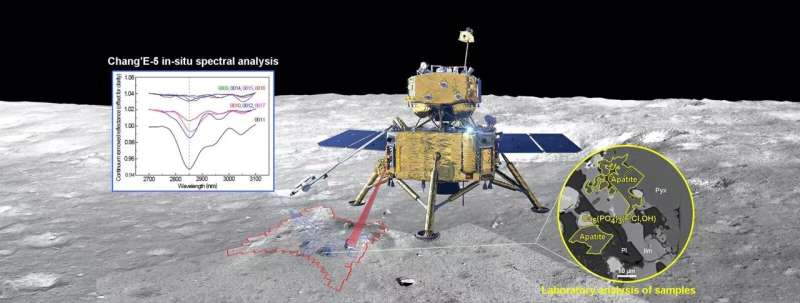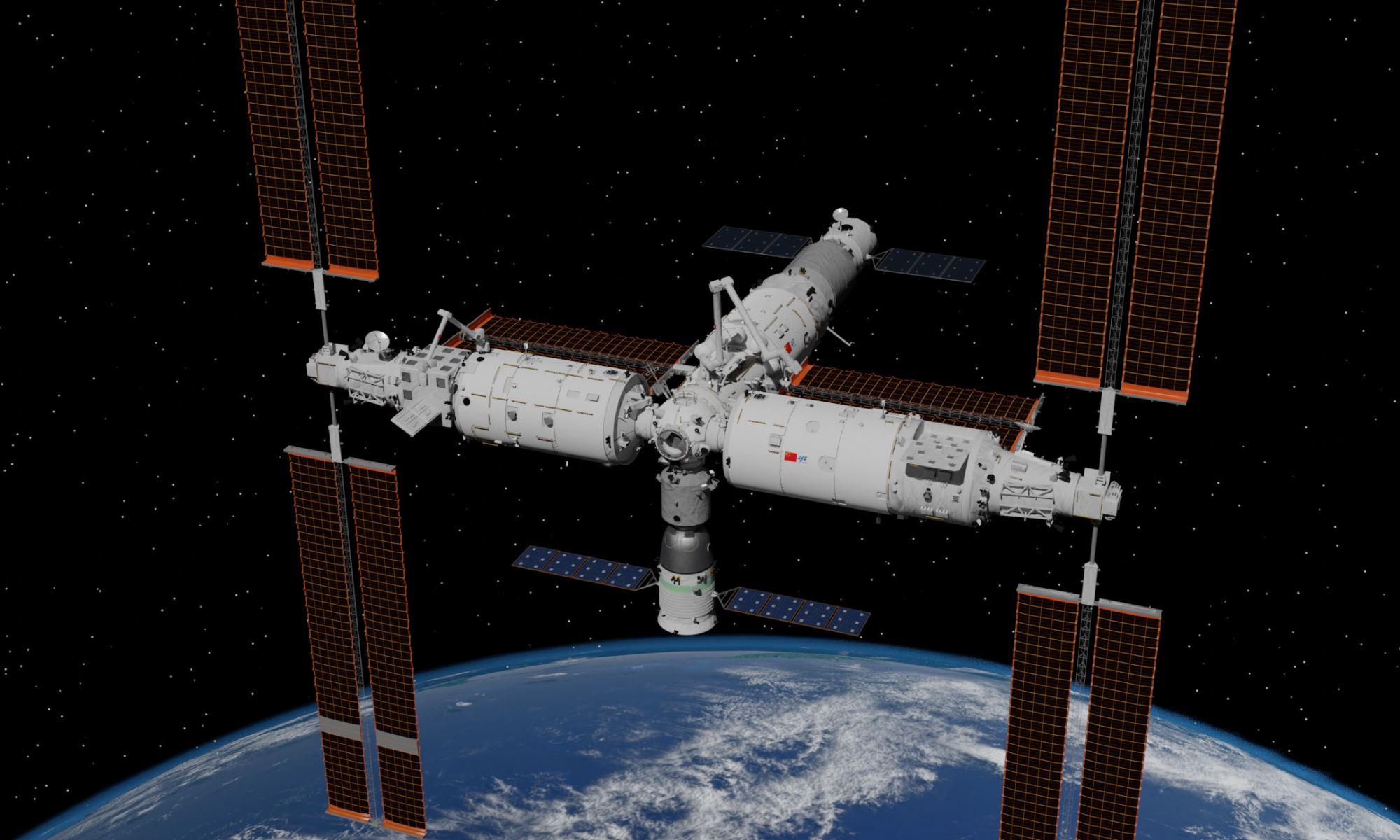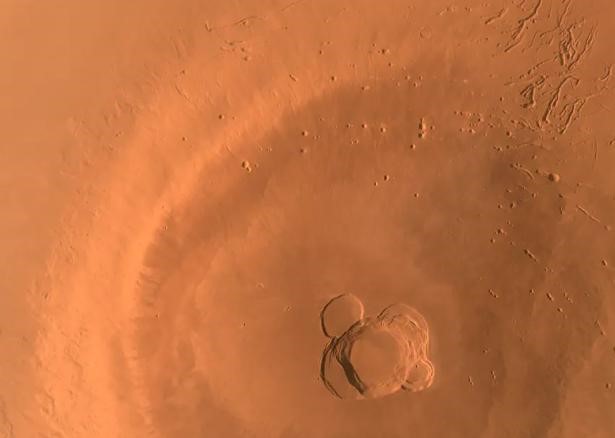On the afternoon of Monday, October 31st, 2022 (Halloween!), China launched the Mengtian laboratory cabin module into space, where it will join the Tiangong modular space station. This module, whose name translates to “Dreaming of the Heavens,” is the second laboratory and final addition to Tiangong (“Palace in the Sky”). This successful launch places China one step closer to completing its first long-term space station, roughly one-fifth the mass of the International Space Station (ISS) and comparable in size to Russia’s decommissioned Mir space station.
Continue reading “China Launches Mengtian, the Last Major Module to its Space Station”The Moon had Volcanoes More Recently Than Previously Believed

Fifty years ago, NASA and the Soviet space program conducted the first sample-return missions from the Moon. This included lunar rocks brought back to Earth by the Apollo astronauts and those obtained by robotic missions that were part of the Soviet Luna Program. The analysis of these rocks revealed a great deal about the Moon’s composition, formation, and geological history. In particular, scientists concluded that the rocks were formed from volcanic eruptions more than three billion years ago.
In recent years, there has been a resurgence in lunar exploration as NASA and other space agencies have sent robotic missions to the Moon (in preparation for crewed missions). For instance, China has sent multiple orbiters, landers, and rovers to the Moon as part of the Chang’e program, including sample-return missions. A new study led by planetary scientists from the Chinese Academy of Sciences (CAS) analyzed samples obtained by the Chang’e-5 rover dated to two billion years ago. Their research could provide valuable insight into how young volcanism shaped the lunar surface.
Continue reading “The Moon had Volcanoes More Recently Than Previously Believed”Mars Might Have Been Covered in Lakes in the Ancient Past
Ever since robotic explorers began visiting the Red Planet during the 1960s and 70s, scientists have puzzled over Mars’ surface features. These included flow channels, valleys, lakebeds, and deltas that appear to have formed in the presence of water. Since then, dozens of missions have been sent to Mars to explore its atmosphere, surface, and climate to learn more about its warmer, wetter past. In particular, scientists want to know how long water flowed on the surface of Mars and whether it was persistent or periodic in nature.
The ultimate purpose here is to determine whether rivers, streams, and standing bodies of water existed long enough for life to emerge. So far, missions like Curiosity and Perseverance have gathered volumes of evidence that show how hundreds of large lakebeds once dotted the Martian landscape. But according to a new study by an international team of researchers, our current estimates of Mars’ surface water may be a dramatic understatement. Based on a meta-analysis of years’ worth of satellite data, the team argues that ancient lakes may have once been a very common feature on Mars.
Continue reading “Mars Might Have Been Covered in Lakes in the Ancient Past”China’s Long March Rocket Booster Makes Uncontrolled Reentry Back to Earth
A Chinese Long March 5B rocket first stage made an uncontrolled, fiery reentry through Earth’s atmosphere over Southeast Asia today (Saturday), six days it launched a new science module to China’s Tiangong space station. While the eventual return of the booster was known, China made the decision to let it fall uncontrolled. They also did not share any tracking data, and the large size of the rocket stage drew concern about fragments possibly causing damage or casualties.
The US Space Command confirmed reentry of the debris from the roughly 30-meter-long core (100 ft.) stage of the Long March 5B occurred at 12:45 p.m. Eastern time (1645 UTC) on July 30, 2022 over the Indian Ocean.
Continue reading “China’s Long March Rocket Booster Makes Uncontrolled Reentry Back to Earth”China has Added a Science Module to its New Space Station
China has expanded their research capabilities on the Tiangong 3 space station by adding a science module, named Wentian. The new laboratory launched from the Wenchang launch center on July 23 and the module docked to the space station on July 25. China’s Manned Space Agency (CMSA) says the astronauts on board will soon be able to conduct experiments in microgravity and life sciences.
Continue reading “China has Added a Science Module to its New Space Station”An Ambitious Plan to Find Earth 2.0
When it comes to astronomy, the more instruments watching the sky, the better. Which is why it has been so frustrating that the world’s rising superpower – China – has long lacked focus on space-science missions. In recent years, with some notable exceptions, China’s space agency has focused on lunar exploration and human spaceflight, as well as some remote monitoring capabilities, leaving the technical know-how of arguably the world’s second more capable country on the sidelines when it comes to collecting space science data. Now, a team led by Jian Ge of the Shanghai Astronomical Observatory has suggested the most ambitious Chinese-led space science mission to date. And it plans to search for one of the holy grails of current astronomy research – an exoplanet like Earth.
Continue reading “An Ambitious Plan to Find Earth 2.0”China’s Tianwen-1 has Imaged the Entire Surface of Mars, Completing its Primary Mission
After exploring Mars for more than a year, China’s Tianwen-1 space probe has successfully taken images covering the entire Red Planet, China’s National Space Administration (CNSA) announced on June 29. Tianwen-1, which translates to “quest for heavenly truth”, consists of six separate spacecraft: an orbiter, two deployable cameras, lander, remote camera, and Zhurong rover. The images in question were taken by the orbiter while circling Mars 1,344 times, capturing images of the Red Planet from every angle while Zhurong explored the surface. in the statement, CNSA said the probe has now completed all of its tasks, which included taking medium-resolution images covering the entire planet.
Continue reading “China’s Tianwen-1 has Imaged the Entire Surface of Mars, Completing its Primary Mission”China’s Lunar Lander Finds Water Under its Feet

Earlier this year, scientists from China’s Chang’E-5 lunar lander revealed they had found evidence of water in the form of hydroxyl from in-situ measurements taken while lander was on the Moon. Now, they have confirmed the finding with laboratory analysis of the lunar samples from Chang’E-5 that were returned to Earth. The amount of water detected varied across the randomly chosen samples taken from around the base of the lander, from 0 to 180 parts per million (ppm), mean value of 28.5?ppm, which is on the weak end of lunar hydration.
“For the first time in the world, the results of laboratory analysis of lunar return samples and spectral data from in-situ lunar surface surveys were used jointly to examine the presence, form and amount of ‘water’ in lunar samples,” said co-author Li Chunlai from the National Astronomical Observatories of the Chinese Academy of Sciences (NAOC), in a press release. “The results accurately answer the question of the distribution characteristics and source of water in the Chang’E-5 landing zone and provide a ground truth for the interpretation and estimation of water signals in remote sensing survey data.”
Continue reading “China’s Lunar Lander Finds Water Under its Feet”A Geologic map of the Entire Moon has Been Released at 1:2,500,000-Scale

Chinese scientists have created the most detailed map of the Moon yet. It took them 10 years and involved hundreds of researchers. The new map will be a boon to lunar exploration and for anyone who just wants to study our natural satellite in more detail.
Continue reading “A Geologic map of the Entire Moon has Been Released at 1:2,500,000-Scale”Shenzhou-14 Astronauts Begin Their Mission of 6 Months in Space

The Shenzhou-14 mission, carrying three Chinese astronauts, docked successfully earlier this week with the Tiangong-3 space station. During their six-month mission on board the station, the new crew hopes to continue work on construction of the orbital Chinese outpost, which will be about one-fifth the size of the International Space Station.
Continue reading “Shenzhou-14 Astronauts Begin Their Mission of 6 Months in Space”





